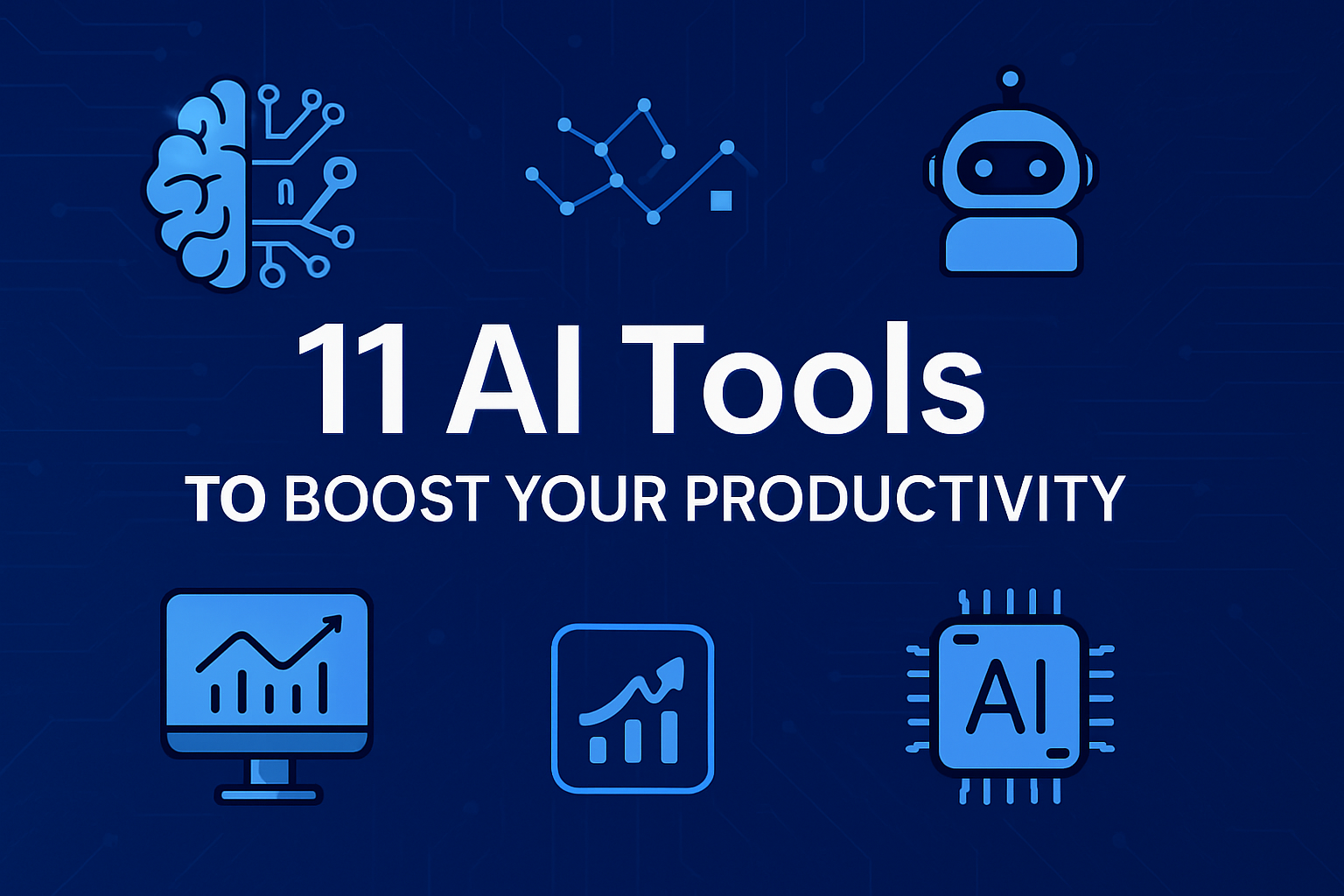11 AI Tools to Boost Your Productivity: As we step into 2025, AI is no longer a futuristic concept — it’s a daily toolset that professionals, creators, and businesses are using to save time, reduce costs, and scale operations. With hundreds of AI tools on the market, identifying the most impactful ones can be overwhelming.
This guide highlights 11 powerful AI tools, including 9 that are already transforming workflows today, and 2 upcoming innovations poised to redefine productivity in 2025.
1. HeyGen – Build a Realistic AI Video Avatar
HeyGen allows users to create lifelike AI avatars for video content without appearing on camera. By uploading a short 5-minute video of yourself, the platform generates a digital version of you that can be used to produce reels, tutorials, or promotional videos.
It’s an ideal solution for entrepreneurs, educators, or marketers looking to scale content production while saving time.
2. ElevenLabs – AI Voice Cloning with Minimal Effort
ElevenLabs enables the creation of custom voice avatars by analyzing 1–2 hours of voice recordings. Once trained, the tool generates realistic audio in the user’s own voice, which can be integrated into videos, podcasts, or automated replies.
More audio input improves the quality, making this a favorite among creators for personalized, hands-free content delivery.
3. Suno AI – Copyright-Free Music Generation
Suno AI helps creators generate original background music that’s free of copyright issues. It’s especially useful for YouTubers, vloggers, and advertisers looking to avoid monetization blocks caused by licensed music.
Other tools like Soundraw also offer mood-based audio generation to match video themes.
4. NotebookLM – Smart Summaries for Any Content
Developed by Google, NotebookLM transforms long documents, blogs, or even YouTube videos into digestible summaries or podcast-like conversations. It supports real-time question-answering based on uploaded PDFs or articles.
This makes it perfect for professionals, students, and readers who want to learn faster while multitasking or commuting.
5. Claude (Anthropic) – Coding and Virtual Computing Made Easy
Claude by Anthropic includes features like natural language coding and simulated computer use. Users can describe tasks in plain English, and Claude automates them — whether it’s generating code or interacting with virtual interfaces.
It’s beginner-friendly and an excellent tool for prototyping, development, and automation.
6. Omi – AI-Powered Wearable for Meeting Summaries
Omi is a hardware pendant designed to record and summarize conversations. Connected to the Omi app, it distinguishes between speakers and generates structured summaries of meetings, complete with searchable Q&A features.
Although not widely available outside the U.S., Omi presents a new way to enhance real-world productivity through ambient AI listening.
7. Instantly + Apollo – Cold Outreach at Scale
This powerful combo simplifies cold email campaigns. Apollo is used to build detailed customer profiles, while Instantly sends tailored outreach messages. Together, they help freelancers and agencies automate lead generation and scheduling — saving hours of manual work.
It’s particularly useful for marketing professionals and startup teams conducting outbound sales.
8. Flux AI – Ultra-Realistic AI Image Generation
Flux AI creates hyper-realistic images of individuals — ideal for profile photos, social media visuals, or content thumbnails. Whether you want a professional LinkedIn banner or lifestyle visuals without photoshoots, Flux AI delivers photorealistic results that rival traditional image editing tools.
9. Perplexity – Real-Time AI Search Engine
Perplexity is a real-time search and research assistant that delivers concise, up-to-date answers from trusted sources — outperforming traditional search engines like Google in many use cases.
With its ability to cite sources and retrieve live information, it’s a must-have for researchers, journalists, students, and business analysts.
What’s Coming in 2025: 2 Tools to Watch
Google Mariner – The Future of Agentic Automation
Google is launching Mariner, an AI agentic workflow built into Chrome. It allows users to input natural language prompts like:
“Find the cheapest flight from San Francisco to Bangalore and check my emails.”
The system completes the task automatically, removing the need for manual browsing or multitasking. Mariner is expected to reshape productivity tools across industries.
OpenAI Sora – Text-to-Video with Storyboarding
OpenAI Sora is a groundbreaking platform for video generation using text prompts. While it’s already known for creating detailed video frames, the new storyboarding feature allows creators to stitch scenes into full narratives — opening up new possibilities for video editors, marketers, and filmmakers.
While minor visual glitches remain, Sora is evolving rapidly and is expected to be a game-changer for creative workflows.

